9 Must-See Cinema Museums
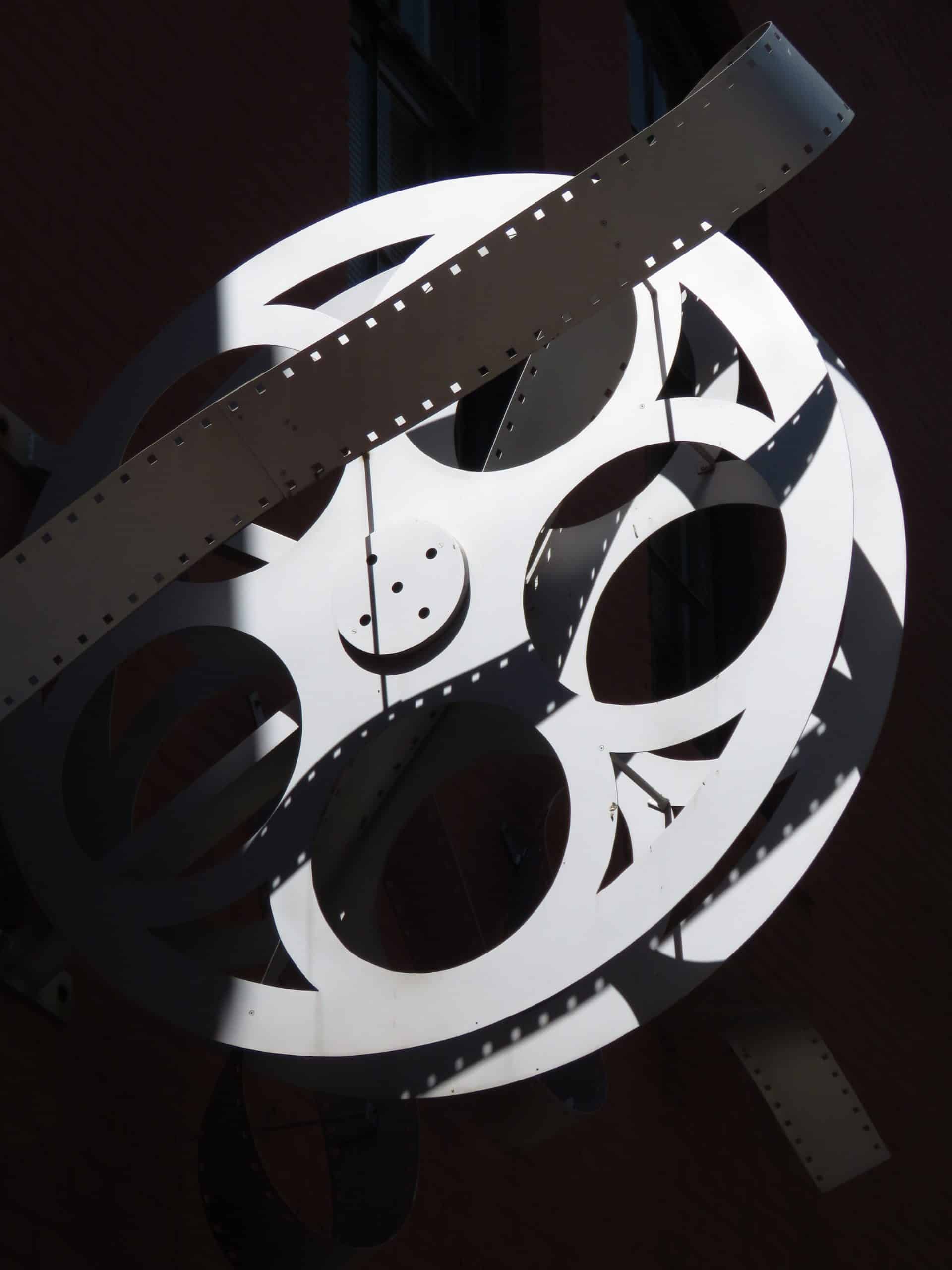
Updated On: April 20, 2024 by Ciaran Connolly
Since its creation in the early 1830s, cinema has and continues to entertain and fascinate the world. People quote movie lines in their daily conversations, they wear shirts featuring on-screen icons such as Charlie Chaplin and Marilyn Monroe, and they decorate their homes with posters and figurines. People follow stars on social media and interact with them at conventions, and many cosplay as their favourite film characters, including Wonder Woman, Princess Leia, and Batman. There are hundreds of journals, magazines, books, podcasts, and documentaries dedicated to cinema but there is another way to explore cinema: museums.
Although many museums feature exhibitions on various films and/or stars, few live up to the displays put on by museums entirely dedicated to the art. Here is a selection of must-see cinema museums.
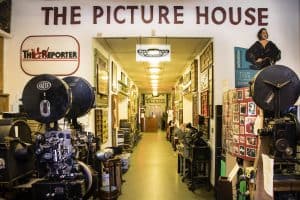
The Cinema Museum – London, England
The Cinema Museum in Kennington, London was established in 1986. The museum was initially housed in Raleigh Hall in Brixton, currently the home of the Black Cultural Archives, then in a former council rent office in Kennington, before being permanently relocated to the Victorian-era Lambeth Workhouse in 1998. The building itself has a notable position in cinema history for it was the childhood residence of silent film star Charlie Chaplin, who lived there while his mother was destitute.
The building is presently owned by property developer Anthology, who are keen to preserve this London gem which is held in high regard by the local community as part of their historical and cultural heritage. Although there have been talks to relocate the museum, co-founder Martin Humphries stated, “I can’t see there being somewhere else to recreate it, but my gut feeling is we’re going to be here forever”.
The museum’s collection was donated by Ronald Grant and Martin Humphries, who had amassed an enormous assortment of cinematic history and memorabilia over a period of many years. Humphries told Time Out magazine in 2018 that “people fall in love with the place. I’ve never been to another museum [like it]”. The collection is a mixture of vintage and new cinema, mostly made up of film reels and stills (over one million), photographs, books, art deco cinema chairs, projectors, posters (75,000), tickets, media clippings, props, and clips from various movies. They also have mannequins sporting cinema usher uniforms from the 1940s and 1950s. One of their oldest collections are the early films of Blackburn film production company Mitchell and Kenyon, ranging from 1899 to 1906.
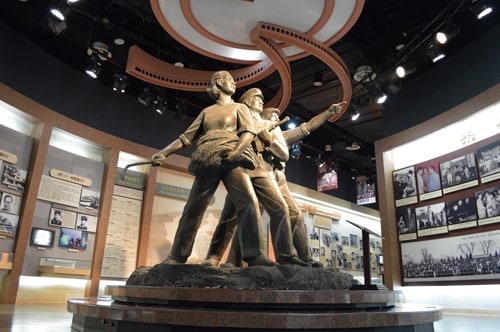
The China National Film Museum – Beijing, China
Established in 2005, the China National Film Museum is the largest film museum in the world. Located in China’s capital city of Beijing, the museum has twenty exhibition halls and five screening theatres. It was renovated in 2011 and its stunning architecture was designed by RTKL Associates and the Beijing Architectural Design Institute; its interior colour scheme – black, white, and grey – was chosen to accentuate an ambience of calm and elegance. According to CNFM, the “design reflects the concept of reaching harmony between film arts and architectural innovation”.
The museum was opened to celebrate 100 years of Chinese cinema, and it features exhibitions promoting and exploring the history of the Chinese film industry, early films such as Ding Jun Shan (Conquering the Jun Mountains), art house films, revolutionary war films, alongside children’s films and educational films. The museum also exhibits the latest cinematic technology and hosts various academic conferences and film screenings. The museum’s collection includes more than 500 film props, 200 film introductions, over 4000 photographs and film reels, and scripts.
CNFM notes that the museum is “known not only for the designer’s visual power but also its ability to provide the audience with a complete intimate experience of contemporary cinema culture”. The twenty exhibition halls are organised according to various periods through Chinese cinematic history, and the latest technology. The first ten halls are on the second and third floors; exhibitions include the birth of Chinese film and its early development, Chinese film during the revolutionary war period, and the establishment and development of cinema in New China.
The exposition area on the fourth floor, housing the remaining ten halls, explores the technical side of cinema – sound and music recording, editing, animation, and cinematography – as well as celebrating the work of individual Chinese directors.
The China National Film Museum offers visitors Virtual Reality experiences – entitled the Lunar Dream, it enables visitors to become astronauts who explore space in a virtual spacecraft – and a unique circular screen, 1,8000 square metres high. The museum’s projection room is also housed by glass walls, permitting visitors to see the film projection process.
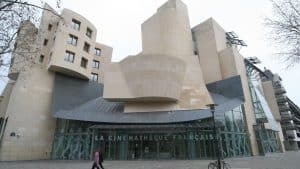
Cinémathèque Française – Paris, France
The Cinémathèque Française is one of the world’s largest film archives that is open to the public. Located in France’s capital city of Paris, it was opened in 1936 by French filmmaker Georges Franju and French film archivist and cinephile Henri Langlois. It is said that Langlois’s screenings during the 1950s pathed the way for the development of auteur theory by French filmmaking icon, and one of the founders of the French New Wave, François Truffaut. The theory, which asserts that a film’s director is a film’s sole author as demonstrated by how their personality infuses the subject matter and visual aesthetic, is an enduring but highly contested theory in film academia to this day.
Langlois began collecting film documents and film-related objects in the 1930s. His collection was enormous and came under threat during the Nazi occupation in France, which demanded that all films made before 1937 be destroyed. Wishing to preserve what he saw as a crucial part of history and French culture, Langlois and his friends smuggled as much as they could out of the country. After the war, the French government granted Langlois a small screening room at Avenue de Messine. Many notable figures of French cinema spent time there, including Alain Resnais, Jean-Luc Godard, and René Clément.
The museum’s collection is often cited as a shrine to the art of cinema. It includes film reels, photographs (including some from Auguste and Louis Lumière, creators of the Cinématographe motion picture system), costumes worn by Hollywood icons including Greta Garbo, Vivien Leigh, and Elizabeth Taylor, and famous props such as Mrs Bates’ head from Alfred Hitchcock’s Psycho and the female robot from Fritz Lang’s German Expressionist masterpiece Metropolis. The museum continues to screen movies, both vintage and contemporary, and regularly hosts lectures and specialist programmes such as ‘elements for a history of cinematographic optics, from its origins to the 1960s’ and ‘cinema and fairground arts: techniques of wonder’.
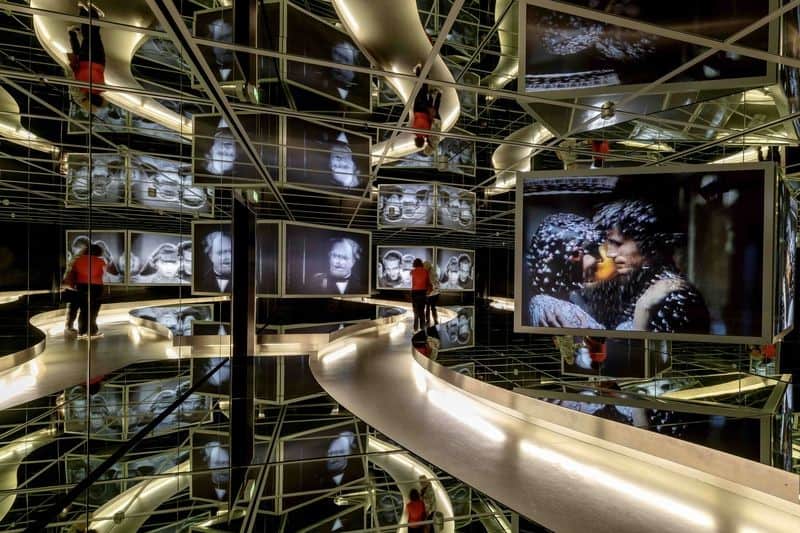
The Deutsches Filminstitut & Filmmuseum – Frankfurt, Germany
The Deutsches Filminstitut & Filmmuseum is a museum in Frankfurt, Germany dedicated to showcasing film’s history, aesthetics, and cultural influence. The museum merged with the Deutsches Filminstitut, an institute of film studies and archives, in 1999.
Its collection features thousands of film reels, photographs, and posters, and has rolling exhibitions, such as The Sound of Disney 1928-1967 and Stanley Kubrick, alongside permanent ones, such as the invention of film in the late 19th century which focuses on the themes of curiosity, movement, photography, and projection, and the vintage theatres of Berlin. One of the museum’s recent exhibitions showcased their latest acquisition of international film posters from the first 40 years of film history. These posters were hidden in a salt mine in Grasleben during the Second World War and have since been restored and digitized by the museum.
While the museum’s collection, library, and archives are impressive, the heart of the Deutsches Filminstitut & Filmmuseum is their cinema. Established in 1971, the cinema has over 130 seats and screens films from around the world, often with guest speakers brought in to contextualise and discuss the films with the audience. The films screened in the cinema often compliment the exhibitions on at the time, which include documentaries of the film production processes of films around the world, and their Classics & Rarities series, which “shows classics from the canon of international film history as well as documentary, short and experimental films that are rarely shown on the big screen”.
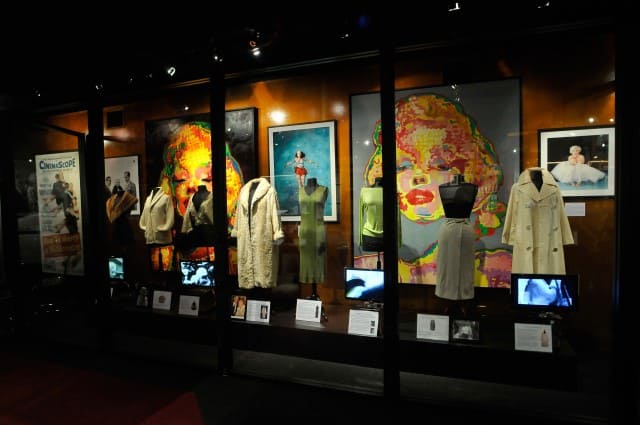
The Hollywood Museum – Hollywood, CA, United States
The Hollywood Museum in California is home to over 11,000 pieces of Hollywood movie and TV memorabilia, including film reels, photographs, costumes, scripts, and stop-motion animation figurines. The museum is situated within the historic Max Factor building on Highland Avenue, which was designed by American architect S. Charles Lee, who is widely considered to be one of the most distinguished designers of motion picture theatres.
The ingenious make-up artist Max Factor was also a key figure in Hollywood as he designed the looks of Classic Hollywood icons such as Jean Harlow, Joan Crawford, and Judy Garland.
The museum is split into four floors and showcases a variety of objects from Hollywood’s silent era up to contemporary cinema. The collection includes personal artifacts owned by stars, such as cars, Marilyn Monroe’s iconic million-dollar dress, and Elvis Presley’s dressing gown, the history of Hollywood and its Walk of Fame, and exhibits designed to showcase the Rat Pack, The Flintstones, Rocky Balboa, Baywatch, Harry Potter, and Star Trek, among others.
Not to be missed is the museum’s lower level, which is a replica of Hannibal Lecter’s jail cell from The Silence of the Lambs. The lower floor has a section dedicated to cult horror film favourites, including Elvira, Boris Karloff’s mummy, vampire, and Frankenstein and his bride.
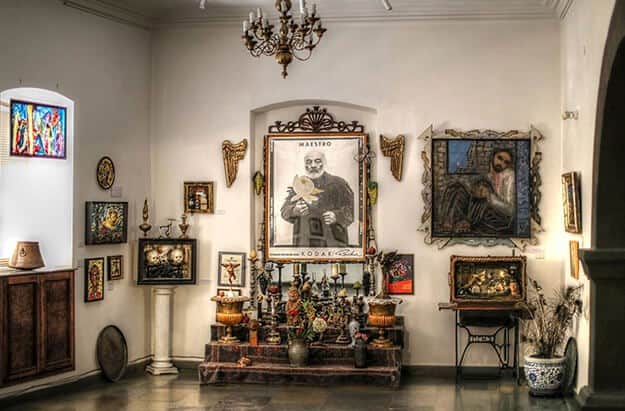
The Sergei Paradjanov Museum – Yerevan, Armenia
The Sergei Paradjanov Museum in Armenia’s capital city of Yerevan is dedicated to the Soviet Armenian director and artist Sergei Paradjanov. It was designed to showcase his unique artistic and literary heritage, and the museum is one of the most popular in the country, both for tourists and international filmmakers such as Nikita Mikhalkov, Yevgeni Yevtushenko, and Enrica Antonioni. It was founded in 1988 by Paradjanov himself but construction of the museum was delayed due to the 1988 Armenian earthquake, and Paradjanov had passed away by the time it opened to the public in 1991.
Paradjanov rose to fame after his film Shadows of Forgotten Ancestors. His native Soviet Union did not approve of the film and rewarded him with being banned from making films. Defiant, Parajanov moved to Armenia and made The Colour of Pomegranates. An experimental film, it told the story of an Armenian poet without dialogue and limited camera movement. Although this film proved just as popular as Shadows of Forgotten Ancestors, Paradjanov was thrown in jail for five years because of it.
To celebrate his work and tenacity, the museum’s collection showcases Paradjanov’s cinematic work, including film reels and scripts, alongside handmade playing cards and 600 original artworks he made in prison, and recreations of his rooms in Tbilisi. The museum also features archives which “include an extensive correspondence of the director with Lilia Brik, Andrei Tarkovsky, Mikhail Vartanov, Federico Fellini, Yuri Nikulin, and other cultural figures”.
Of the museum, Soviet cinematographer and close friend of Parajanov, Mikhail Vartanov said: “is there anywhere in the world a museum of Sergei Parajanov? A museum of his works – his graphics, dolls, collages, photographs, 23 screenplays and librettos of unrealized productions in cinema, theater, ballet… It would become an adornment and pride of any city. I know that sooner or later Parajanov’s screenplays and librettos would be published in a book and I hope that the city with that museum is going to be Yerevan”.
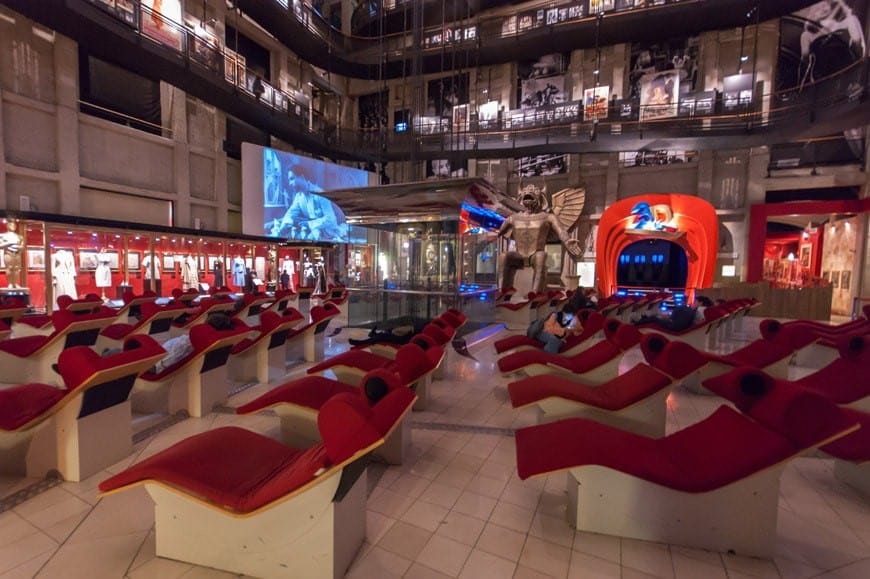
National Museum of Cinema – Torino, Italy
The National Museum of Cinema in Turin, Italy is a motion picture museum located in the historic Mole Antonelliana tower that was first opened in 1958. The museum has five floors and, as the building was originally intended to be a synagogue, various exhibitions are represented within different chapels. It is run by the Maria Adriana Prolo Foundation and a majority of its collection is thanks to collector and historian of Italian cinema Maria Adriana Prolo; often referred to as “the lady of the cinema”, Prolo dedicated her life to the study of cinema. The idea for a museum was conceived in 1941 when Prolo wrote in her diary “June 8, 1941: The Museum was Thought”.
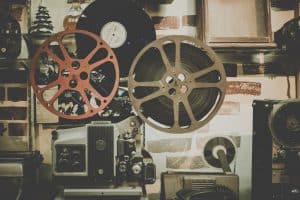
Prolo began collecting and conserving documents and materials from the Turin cinema. According to the Maria Adriana Prolo Foundation, “in 1953, the Cultural Association Museum of Cinema was formed which aimed to ‘collect, preserve and exhibit to the public all the material that refers to the documentation and history of artistic, cultural, technical and industrial activities in cinematography and photography’”.
The National Museum of Cinema’s collection is extensive. It features vintage film post ers, stocks, a library of archives, and pre-cinematographic optical devices such as magic lanterns (an early image projector), and stage items from early Italian cinema. According to inexhibit, “the core of the museum is, without doubt, the Temple Hall, where the stunning dimensions and the proportions of the surrounding space plays a fundamental role in people’s entanglement”.
The exhibition halls are a combination of film clips, photographs, and props. Some of the museum’s most famous include an enormous statue of Moloch from the film Cabiria, the coffin used by Bela Lugosi in Dracula, and Peter O’Toole’s robe from Lawrence of Arabia.
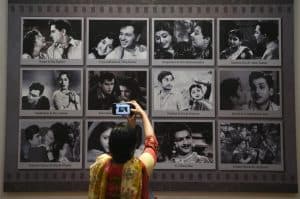
The National Museum of Indian Cinema – Mumbai, India
A recent addition to Bollywood, the National Museum of Indian Cinema was opened to the public in 2019. The first of its kind in India, the museum was designed to showcase the history of Indian cinema, which is an often-overlooked area of the art. Costing a whopping 1.4 billion rupees (15,951,972.58 in Euros), the museum is split between an elegant 19th-century bungalow and a modern five-storey glass structure in south Mumbai.
Exploring over 100 years of Indian cinema, the museum showcases early Indian silent films, “film properties and costumes, vintage equipment, posters, copies of important films, promotional leaflets, soundtracks, trailers, transparencies, old cinema magazines, statistics covering film making and distribution”. Some of their most fascinating items include the famous first show of the Lumiere brothers’ films in Mumbai in 1896, hand-painted posters, audio recordings of K. L. Saigal, considered the first star of Hindi-language cinema, and clips and documents relating to India’s first full-length feature film, Dadasaheb Phalke, directed by Raja Harishchandra in 1913.
The exhibitions are designed chronologically, tracking its 100 years over four floors: “Level 1: Gandhi and Cinema; Level 2: Children’s Film Studio; Level 3: Technology, Creativity and Indian Cinema; Level 4: Cinema across India”. They explore how developments in American and British film industries impacted Indian cinema (such as the advent of sound, the studio era, and the impact of the second world war) before delving into how Indian cinema found its own unique, regional voice.
The museum was inaugurated by Prime Minister Narendra Modi in January 2019. He told Daily News and Analysis India that, “films and society are a reflection of each other. What you see in films is happening in society and what is happening in society is seen in films. Once only rich people from “tier 1 cities” could enter the film industry, but now artists from tier 2 and tier 3 cities are getting a foothold on the strength of their artistic abilities”.
The museum marks a turning point for the country: “this shows India is changing,” Modi commented, “earlier, poverty was considered a virtue… Films were about poverty, helplessness. Now, along with problems, solutions are also being seen. If there are a million problems, there are a billion solutions. Films used to take 10-15 years to get completed. Famous films were actually known for the (long) time taken for their completion… Now films get finished in a few months and in a stipulated time-frame. Similar is the case of government schemes. They are now being finished in a stipulated time-frame.”
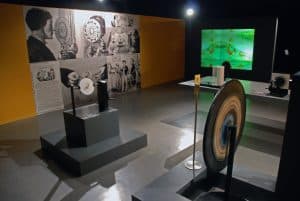
The Cinema Museum – Girona, Spain
Established in 1998, the Cinema Museum in northern Spain is dedicated to cinema and the world of moving images. It was the first of its kind in Spain, and with an assortment of over 30,000 objects from the personal collection of Spanish filmmaker Tomàs Mallol, the museum is a popular location for tourists and film buffs.
The museum was a passion project for Mallol, whose love of cinema at an early age inspired him to make his own short films, which were well received locally and internationally, and begin acquiring various important objects to the history of cinema, including early cameras. Exhibited in chronological order, the Cinema Museum showcases “12,000 pieces, including instruments, accessories, photographs, engravings and paintings, along with 2000 posters and film publicity material, 800 books and magazines and 750 films in all formats”.
The Cinema Museum has various permanent exhibitions that have proven popular with visitors. The museum takes visitors back to the early days of moving images arts, over 400 years old, with an emphasis on Chinese Shadow Puppet Theatre before moving to early cinema, showcasing artefacts such as camera obscuras and magic lanterns. An entire floor is dedicated to the magicians and innovators of silent cinema, particularly the Lumière brothers and Georges Méliès, and the fast-paced technological evolution of the art.
The museum also offers regular lectures, screening programmes, and educational workshops for students.






